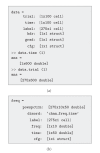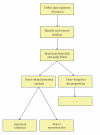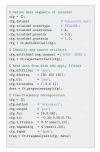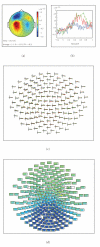FieldTrip: Open source software for advanced analysis of MEG, EEG, and invasive electrophysiological data
- PMID: 21253357
- PMCID: PMC3021840
- DOI: 10.1155/2011/156869
FieldTrip: Open source software for advanced analysis of MEG, EEG, and invasive electrophysiological data
Abstract
This paper describes FieldTrip, an open source software package that we developed for the analysis of MEG, EEG, and other electrophysiological data. The software is implemented as a MATLAB toolbox and includes a complete set of consistent and user-friendly high-level functions that allow experimental neuroscientists to analyze experimental data. It includes algorithms for simple and advanced analysis, such as time-frequency analysis using multitapers, source reconstruction using dipoles, distributed sources and beamformers, connectivity analysis, and nonparametric statistical permutation tests at the channel and source level. The implementation as toolbox allows the user to perform elaborate and structured analyses of large data sets using the MATLAB command line and batch scripting. Furthermore, users and developers can easily extend the functionality and implement new algorithms. The modular design facilitates the reuse in other software packages.
Figures







Similar articles
-
NeuroPycon: An open-source python toolbox for fast multi-modal and reproducible brain connectivity pipelines.Neuroimage. 2020 Oct 1;219:117020. doi: 10.1016/j.neuroimage.2020.117020. Epub 2020 Jun 6. Neuroimage. 2020. PMID: 32522662
-
EasyMEG: An easy-to-use toolbox for MEG analysis.Comput Methods Programs Biomed. 2020 Apr;186:105199. doi: 10.1016/j.cmpb.2019.105199. Epub 2019 Nov 12. Comput Methods Programs Biomed. 2020. PMID: 31743827
-
MANTA--an open-source, high density electrophysiology recording suite for MATLAB.Front Neural Circuits. 2013 May 6;7:69. doi: 10.3389/fncir.2013.00069. eCollection 2013. Front Neural Circuits. 2013. PMID: 23653593 Free PMC article.
-
ElectroMagnetoEncephalography software: overview and integration with other EEG/MEG toolboxes.Comput Intell Neurosci. 2011;2011:861705. doi: 10.1155/2011/861705. Epub 2011 Mar 15. Comput Intell Neurosci. 2011. PMID: 21577273 Free PMC article. Review.
-
Magnetoencephalography for brain electrophysiology and imaging.Nat Neurosci. 2017 Feb 23;20(3):327-339. doi: 10.1038/nn.4504. Nat Neurosci. 2017. PMID: 28230841 Review.
Cited by
-
Beta and theta oscillations track effort and previous reward in the human basal ganglia and prefrontal cortex during decision making.Proc Natl Acad Sci U S A. 2024 Jul 30;121(31):e2322869121. doi: 10.1073/pnas.2322869121. Epub 2024 Jul 24. Proc Natl Acad Sci U S A. 2024. PMID: 39047043 Free PMC article.
-
"Neural Noise" in Auditory Responses in Young Autistic and Neurotypical Children.J Autism Dev Disord. 2024 Feb;54(2):642-661. doi: 10.1007/s10803-022-05797-4. Epub 2022 Nov 25. J Autism Dev Disord. 2024. PMID: 36434480 Free PMC article.
-
The Neural Dynamics of Attentional Selection in Natural Scenes.J Neurosci. 2016 Oct 12;36(41):10522-10528. doi: 10.1523/JNEUROSCI.1385-16.2016. J Neurosci. 2016. PMID: 27733605 Free PMC article.
-
ERP evidence for on-line syntactic computations in 2-year-olds.Dev Cogn Neurosci. 2016 Jun;19:164-73. doi: 10.1016/j.dcn.2016.02.009. Epub 2016 Mar 12. Dev Cogn Neurosci. 2016. PMID: 27038839 Free PMC article.
-
Continuous sensorimotor rhythm based brain computer interface learning in a large population.Sci Data. 2021 Apr 1;8(1):98. doi: 10.1038/s41597-021-00883-1. Sci Data. 2021. PMID: 33795705 Free PMC article.
References
-
- Delorme A, Makeig S. EEGLAB: an open source toolbox for analysis of single-trial EEG dynamics including independent component analysis. Journal of Neuroscience Methods. 2004;134(1):9–21. - PubMed
-
- Scherg M. Advances in Audiology. Auditory Evoked Magnetic Fields and Electric Potentials. Vol. 6. Basel, Switzerland: Karger; 1990. Fundamentals of dipole source potential analysis; pp. 40–69.
-
- Hämäläinen MS, Ilmoniemi RJ. Interpreting magnetic fields of the brain: minimum norm estimates. Medical and Biological Engineering and Computing. 1994;32(1):35–42. - PubMed
-
- Van Veen BD, Van Drongelen W, Yuchtman M, Suzuki A. Localization of brain electrical activity via linearly constrained minimum variance spatial filtering. IEEE Transactions on Biomedical Engineering. 1997;44(9):867–880. - PubMed
Publication types
MeSH terms
LinkOut - more resources
Full Text Sources
Other Literature Sources
Medical

